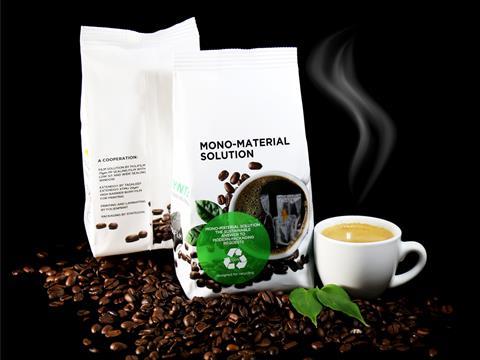
Process and packaging technology company Syntegon, film manufacturer Taghleef Industries, and film extrusion specialist Polifilm Extrusion have jointly developed a recyclable polypropylene monomaterial solution with aroma-proof qualities for the coffee market.
According to Polifilm, for decades, coffee packaging with its aluminium-containing composite has been a classic example of a hard-to-recycle solution. It is the company’s view that the main reason for the long-lasting popularity of this packaging form has been the lack of a substitute for a reliable aroma barrier in combination with a suitable sealing film. This is the problem that the partnership seeks to address with its new product.
Regarding the construction of the new solution, a press release from Polifim states: “While Taghleef Industries' printable BOPP film EXTENDO has excellent barrier properties, POLIFILMs PP sealing film convinces with a wide sealing window and an early seal initiation temperature, also known as SIT (Seal Initiation Temperature). The wide sealing window allows larger tolerances in machine settings and thus stabilizes the packaging process.”
Syntegon successfully processed these both into flow packs and re-closable stand-up pouches with zippers.
To ensure that the solution can be processed on common packaging machines, the POLIFILM developers focused on minimizing the SIT of the PP sealing film. This is necessary when using BOPP as an outer layer in order to achieve a sufficiently wide sealing window in the common heat-sealing process, despite the lower temperature stability compared to conventional PET.
"Our goal is to ensure a consistently good packaging quality with high machine efficiency and availability, also with new sustainable packaging materials," says Torsten Sauer of Syntegon. "In addition, it is important for us to support our customers in the changeover to a sustainable packaging material. In doing so, we are pleased to accompany our customers all the way to the finished product on the shelf".
The companies point out that this concept can be applied not only to coffee packaging but also to the design of other food and non-food packaging, such as detergent and hygiene products.










